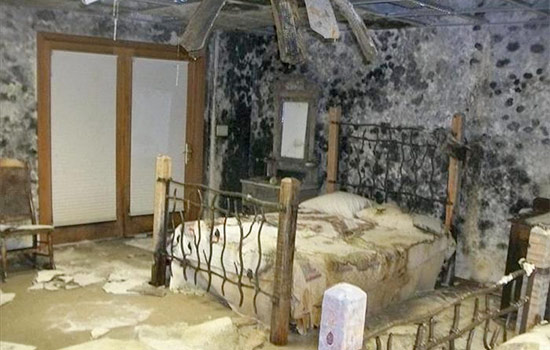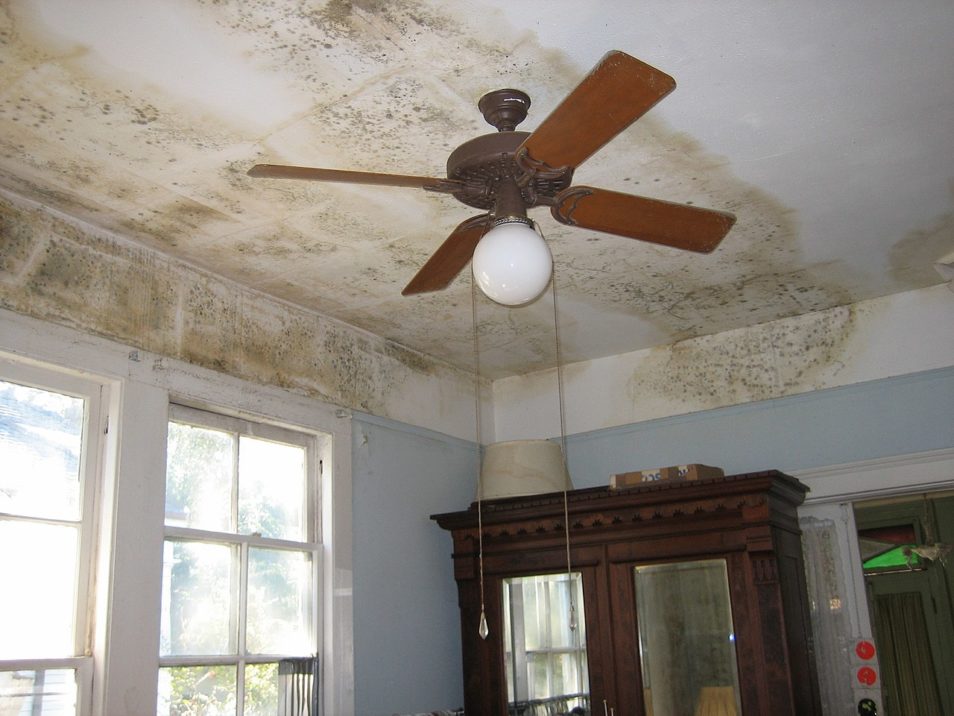Redfins checklist for Household Mold
- August 1, 2022
- Posted by: Cesar Mayorga
- Category: Uncategorized



With Redfins checklist for Household Mold you will find Blu Cleaning as the recommended partner to help you identify and remediate mold in your household or commercial place of business. We all know that we don’t want mold in our homes. It looks and smells bad, spoils our food, invades our living spaces, and can even cause health problems. But even though mold is a top concern for homeowners and potential buyers, many people are still confused about how and where to look for signs of mold.
Mold can grow on walls, cabinets, curtains, clothing, furniture, carpets, and other surfaces. It’s commonly found in basements, bathrooms, and crawl spaces. Keep reading to find out how to identify some of the most common types of mold, how they can affect your home and health, and what to do if you find mold in your home.
Mold vs. Mildew
Mold and mildew are both fungi that most often grow in moist, warm environments. However, mildew is far less hazardous to your health and home than mold and is generally much easier to get rid of. In most cases, all you need is a scrub brush and some store-bought cleaner to remove it. On the other hand, mold remediation generally requires some investigative work and the help of a professional.
Common Types of Mold
Mold is a classification of fungus that can grow in just about any dark environment where there is moisture and organic matter. Mold spores can float through the air and begin to grow once they find a damp place to land. That’s why household mold is often found where moisture collects, like near pipes, roofs, walls, basements, crawl spaces, kitchen cabinets, and old floorboards.
There are thousands of species of fungi and mold, but some are much more likely to be found in homes than others. The CDC identified the most common types of indoor mold as Aspergillus, Penicillium, and Cladosporium, while Stachybotrys Chartarum (sometimes called “black mold”) is known to be the most dangerous form of household mold to human health.
Aspergillus
The most common type of household mold in the US, Aspergillus often grows on dust, powdery food items, drywall, insulation, clothing, and paper. It can appear in a variety of colors, including brown, black, gray, yellow, or green.
Continuous exposure to Aspergillus can cause health issues such as allergic reactions, lung infections, asthma attacks, and other immune responses, especially in people with preexisting conditions. To prevent this type of mold from growing, try to keep all areas of your home dry and properly ventilated. Turning on bathroom and kitchen fans and wiping down areas where water or moisture collects can go a long way in preventing mold.
Penicillium
Penicillium is a broad genus containing over 300 species. Some species are beneficial to humans and are used in the production of various cheeses and medications, while others are toxic and can cause health concerns that can worsen over time and with prolonged exposure.
This type of mold is almost always green, spreads easily, and is often associated with spoiled food, but it can also grow in or around carpets, insulation, furniture, or wallpaper. Unlike many other types of mold, it is capable of growing in places with low humidity.
Cladosporium
Unlike most other types of mold, Cladosporium can grow in cool environments. This type of mold is typically dark in color, growing in clusters of yellow, black, or green dots. Growing and thriving in both indoor and outdoor spaces, it’s common to find household Cladosporium in basements, bathrooms, around faucets, on fabric and upholstery, and in attics.
Extended exposure to Cladosporium can lead to the development or worsening of allergies and asthma and may cause eye, ear, or sinus infections in extreme cases.
Stachybotrys Chartarum (“Black Mold”)
Black mold in the home typically grows in cellulose-rich environments and places where moisture collects. It is commonly found in basements, air conditioning ducts, crawl spaces, insulation and drywall, and carpets. It typically carries a strong earthy or musty scent and appears greenish-black.
Although it’s not the most common, black mold is probably the most well-known type of household mold, and for good reason. It produces toxins that can cause a variety of health problems, including respiratory and allergy issues, headaches, fever, and fatigue. In severe cases, prolonged exposure to black mold can cause an allergic bodily response that can include vomiting and bleeding in the lungs.
The required conditions for mold growth and the impact it has on your home and family vary across species. But regardless of the type of mold you have in your home, it’s important to detect it and get rid of it as quickly as possible.
How Mold Can Affect Your Health
Mold can affect your health in a variety of ways depending on the species, how much there is, how long you’ve been exposed to it, and whether or not you suffer from allergies, asthma, or other pre-existing health conditions.
Most types of mold are not life-threatening to healthy adults but can lead to a number of unpleasant symptoms that should not be ignored. Common symptoms of mold allergy and sensitivity include:
- Chest congestion
- Coughing and wheezing
- Nasal congestion
- Sneezing
- Sore throat
- Eye and skin irritation
- Headaches
- Dry skin
Some types of mold (black mold, for example) are more dangerous to humans and animals than others because they produce mycotoxins that can cause severe symptoms and lead to mold poisoning. In serious cases, exposure to these toxins can be fatal to young children, elderly people, or people with pre-existing health conditions such as allergies, asthma, or immune disorders.
The best way to prevent and address symptoms of mold allergies is to reduce or eliminate your exposure. Still, if you experience nasal congestion, shortness of breath, coughing or wheezing, or other persisting symptoms, it’s important to make an appointment with your doctor in addition to taking the necessary steps to remove the mold from your home.
How to Identify and Get Rid of Household Mold
Identifying mold is not always simple or straightforward. While some mold is easy to see (you are likely to notice if there is mold growing in your shower stall, for example), other molds can be harder to detect.
Mold often appears green or black in color, but it can also be white, blue, yellow, or pink. In fact, certain types of mold can look different depending on the environmental conditions it’s growing in. Because of this, if you suspect that you have mold growing in your home, it’s important to get in touch with a mold remediation contractor as soon as possible in order to address the problem.
Here are some common warning signs of mold you’ll want to keep an eye out for:
- Stained or discolored walls
- Spots or blotches that appear black or green
- Dusty, damp, or earthy smells
- Areas where water or moisture regularly collects
- Ongoing cold- or flu-like symptoms
- Frequent headaches or respiratory issues
- Recent flooding or other water damage
Testing for Mold
It’s important to keep in mind that mold is a symptom of an underlying water or moisture issue and that simply removing the mold on the surface is not enough. Whatever is causing the mold to grow – whether it’s a leak, poor ventilation, inadequate drainage, or something else – needs to be addressed in order to prevent the mold from growing back.
If you’ve noticed signs of mold, the safest way to ensure that your home and health aren’t at risk is to have professional testing done. Mold testing should be conducted by experts who understand the proper protocols and how to interpret results. In some cases, you may be able to collect the sample yourself, if you prefer, and have it sent to a lab for professional testing and analysis.
Not only can mold testing provide valuable insight into the type(s) of mold you’re dealing with, but it can also help point to appropriate solutions when the surrounding conditions are taken into account.
Do you think you might have mold growing in your home?
Maybe you’ve noticed an unusual smell, can see signs of mold growth, have developed lasting cold- or flu-like symptoms, or are having trouble breathing. Whatever the reason, if you’re concerned that mold is growing in your home, it’s important to determine the type and severity through a professional mold inspection.
With Redfins checklist for Household Mold you will find Blu Cleaning as the recommended partner to help you identify and remediate mold in your household or commercial place of business.






